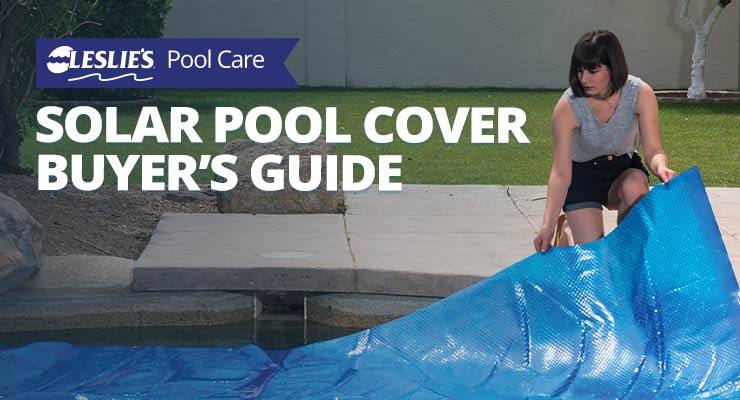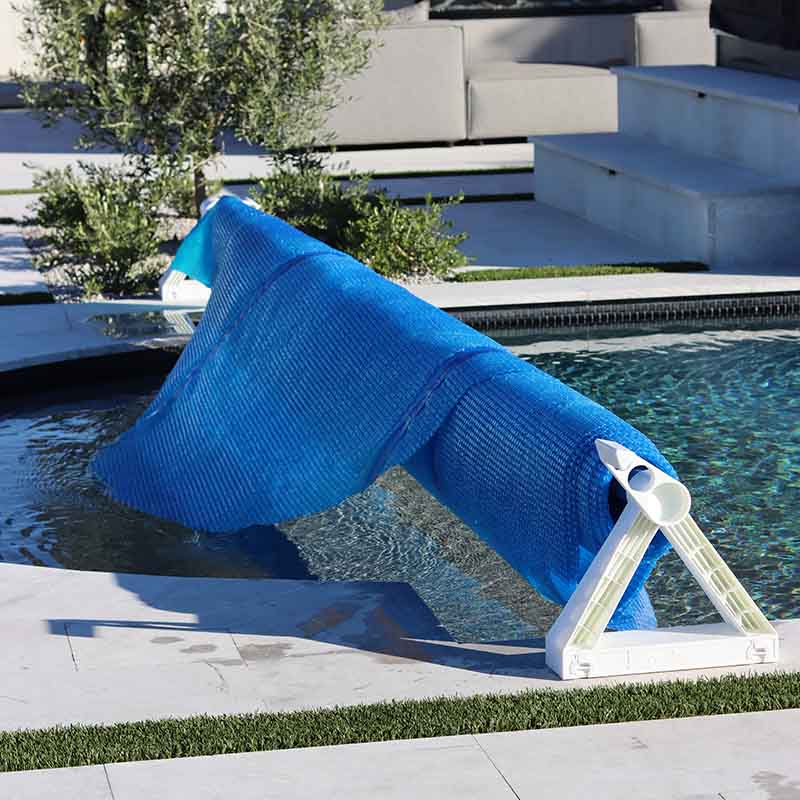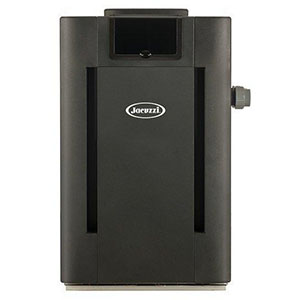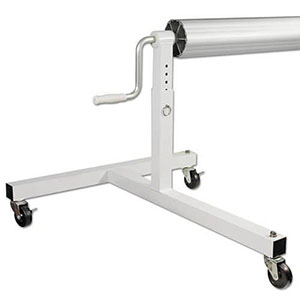
Solar Pool Cover Buyer's Guide
It doesn’t take long to discover the benefits of using a solar pool cover. Solar covers, also called solar blankets, are a lightweight floating barrier for the surface of the pool. They effectively reduce the rate of evaporation, helping pool owners save money on water, pool chemicals, and even heat energy. They also help you swim more, gaining more time in the early spring, late fall, and early hours of each day. Solar covers have a fairly low purchase price, and in most cases, the money you’ll save on water and chemicals can help a solar cover pay for itself within the first year. But this is just one of several reasons why a solar cover is a smart investment. To help you decide if a solar cover is right for your pool, we’ve put together a handy solar cover buying guide.
What is a Solar Pool Cover?
Solar pool covers are UV-stabilized polyethylene pool covers that strongly resemble an oversized sheet of colored, heavy-duty bubble wrap. But they are so much more than that!

How Does a Solar Cover Work?
The small air pockets that make up a solar cover serve a few purposes: 1) to keep the blanket afloat, 2) to transfer solar heat energy into the water below, and 3) to insulate the water’s surface against heat loss during the cool evening hours. In addition, the solid polyethylene layer significantly reduces the rate of evaporation. Heat is primarily lost through evaporation or radiant transfer at the pool’s surface, and solar pool covers are effective at reducing both. Simply place the cover on the water (bubble side down) whenever the pool is not in use.
Why Buy a Solar Cover?
Learning how a solar cover works makes it easy to understand the benefits of using one. During the warm summer months, the average pool loses around 1.5” of water each week due to evaporation alone. Pools in hot, dry climates can lose even more. In addition, chemicals must be constantly replaced due to evaporation or breakdown from UV rays. By simply using a solar cover on the pool, you can effectively reduce water loss by as much as 90-95%, and you'll use up to 30-60% less chemicals throughout the year. Just think of all the money you can save!
Solar covers are also useful for keeping the pool nice and warm, and can extend pool season by a few weeks at both opening and closing time. Solar covers can increase water temperatures by 10-18° Fahrenheit on their own, depending on the thickness of the cover. If you’re also using a heat pump or a natural gas/propane pool heater, solar covers maximize heating efficiency and help keep heating energy costs to a minimum. Solar covers can also be paired with solar pool heaters for a highly efficient green heating alternative.
Last, but certainly not least, using a solar cover in your pool can help reduce the amount of dust, dirt, plant matter, and other small debris that enters the water. Although this benefit won't necessarily save you any money, it can help cut down on pool cleaning time, and it may also help you go longer between filter cleanings and clearing out your pump/skimmer baskets.
BONUS TIP: A solar cover reel makes it fast and easy to handle a solar cover, both when putting it on and taking it off the pool. No matter whether you have an inground or above ground pool, solar cover reels are available in a variety of sizes and styles. As you'll learn below, a solar cover reel can also help prolong the lifespan of your solar pool cover.
How to Choose a Solar Pool Cover
There are many choices available when deciding on a solar cover for your pool. They’re offered in three thickness levels: 8 mil, 12 mil or 16 mil. Each thickness level has its own set of pros and cons. As you’ll see in the table below, the thicker 16 mil cover lasts longer and transfers more heat, but also comes with a higher price tag. The thinner 8 mil cover may cost less upfront, but it offers less heating potential and comes with a shorter warranty. If you live in windy areas or a cooler climate, the 16 mil cover will likely be your best bet. On the other hand, the 8 mil cover is an economical option for those living in mild or warm climates. Many pool owners opt for the 12 mil cover, which offers a happy medium between the three.
| Thickness | Weight | Temp. Increase | Price | Warranty |
| 8 mil | Lightest | Up to 10°F | $ | 3-Year Limited |
| 12 mil | Moderate | Up to 15°F | $$ | 5-Year Limited |
| 16 mil | Heaviest | Up to 18°F | $$$ | 7-Year Limited |
Once you’ve chosen the cover thickness that works best for your needs and budget, it’s time to measure the pool. There are many sizes of rectangular, round, and oval covers to fit most pools – even unique shapes! For L-shaped, kidney-shaped, or other uniquely shaped and custom pools, just identify the greatest length and width of your pool, then cut the cover with a pair of scissors or a razor knife to get the perfect fit. Just use caution if cutting the cover inside the pool if you have a vinyl liner – you don't want to accidentally poke a hole in the liner!
Caring for Your Solar Cover

To get the most out of your new solar cover, you’ll need to care for it properly. Most warranties cover delamination (separating layers) or separation of the seams between panels. But the most common reason covers fail is improper care and handling, which isn’t covered by warranty. Improper handling of a solar cover can lead to cracking, fading, and deterioration, eventually causing the bubbles to break down and fall off. When that happens, it's time to replace the cover. Here are a few tips to prolong the life of your new solar pool cover:
- Maintain proper water balance: pH, Total Alkalinity, and Calcium Hardness.
- Leave the solar cover off for 8-10 hours after shocking the pool, and leave it off for at least 2 hours when adding other strong pool chemicals. High levels of strong pool chemicals (chlorine, especially) are bad news for solar covers.
- Use a solar cover reel to make it easier to remove and replace the cover. Solar reels also reduce the risk of damage from constantly folding and handling the cover on your own.
- Never leave the cover in direct sunlight while it’s off the pool. Position the cover reel or folded blanket in a shaded area, or cover it with a solar cover protector or Poly Tarp to prevent fading, cracking, and delamination.
- Thoroughly clean and dry the cover before storing it for winter. Leaving a cover dirty and covered in chemical residue can greatly reduce its lifespan.
Conclusion
It’s easy to extend your swimming season with a new solar blanket for the swimming pool! A solar cover is a smart pool investment that will quickly pay for itself thanks to the savings on water, chemicals, and heating energy. With prices starting under $100, there’s never been a better time to purchase a new solar cover for your pool.


